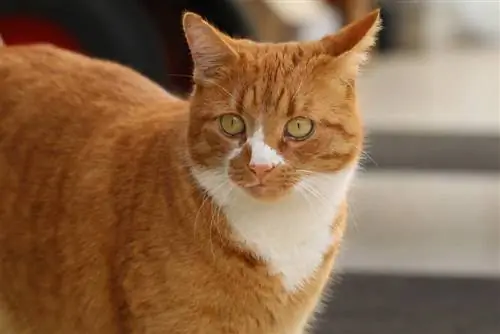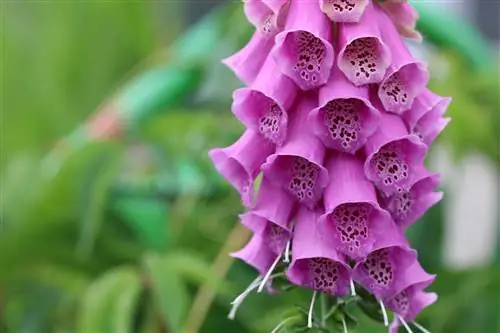- Author admin [email protected].
- Public 2023-12-17 03:39.
- Last modified 2025-06-01 06:48.
The question about the toxic content in plants is quite legitimate. Mother Nature has produced a we alth of plants that contain substances that have a harmful effect on the organism. The devilish thing is that some plants are harmless to humans, while they have dangerous effects on life and limb for animals. Responsible pet owners are therefore right to ask themselves: Which houseplants are poisonous to dogs and cats? The following list of questionable species and varieties provides more information.
Poisonous to dogs and cats
The sophisticated nutrition plan for the beloved dog and the adored cat comes to nothing when they upset their stomachs because they nibbled on a houseplant. Please pay attention to the following list, which lists species and varieties of concern in alphabetical order
Poisonous houseplants A to D
Cyclamen (Cyclamen persicum)
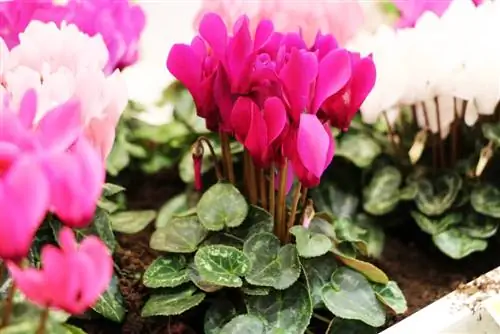
The extremely popular potted plants bloom on the windowsill from August to April in white, pink and red. The tubers contain the toxin cyclamine. Just0.2 grams are enough to cause the first symptoms of poisoning. Ingestion of 8 grams or more is considered a lethal dose.
Amaryllis (Hippeastrum spec.)

The houseplant, also known as knight's star, contains the alkaloid lycorine in both the bulb and the other parts of the plant, which is classified asstrongly poisonous. Even simple skin contact can cause serious irritation. Eating a flower bulb - even in small quantities - is life-threatening for dogs and cats.
Azalea (Rhododendron simsii)
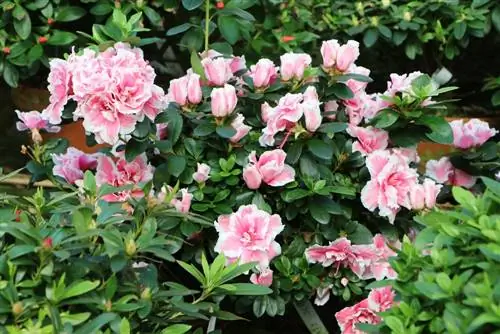
The azalea cannot be missing from a creatively arranged flower bench. Due to the acetylandromedol content, dogs and cats are at risk of poisoningif they eat parts of plants The consequences are nausea, vomiting and even slowed cardiac activity.
Birch Fig (Ficus)
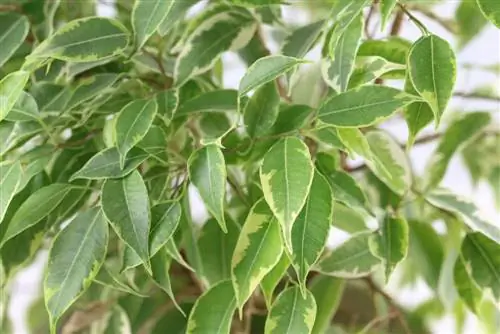
While the white milky sap of a birch fig is largely unproblematic for humans, your four-legged housemate will suffer typical symptoms of poisoning after ingesting rubber tree leaves. If it is a larger amount,Symptoms of paralysis are added.
Bow hemp (Sansevieria trifasciata)
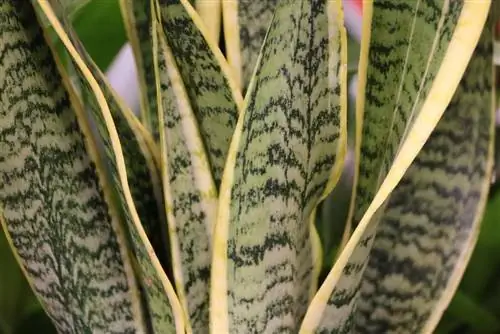
On the windowsill at home, arched hemp is making a much-noticed comeback as an evergreen foliage plant. Much to the chagrin of dogs and cats, because the saponins they contain have an effect even in small quantitiestoxic.
Christ's Thorn (Euphorbia milii)
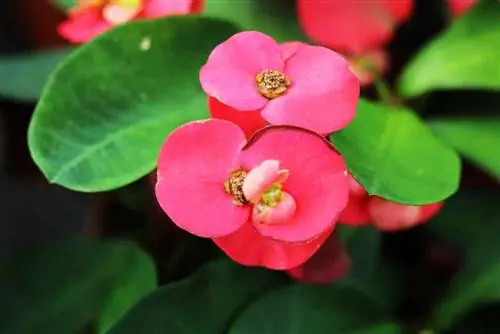
The popular spurge plant provides a we alth of colorful flowers on your home windowsill from November to April. It's a good thing that the shrub has sharp thorns to keep curious dogs and cats away. If consumed, thepoisonous milky juice causes severe headaches and staggering dizziness. As it progresses, shock and serious kidney damage occur.
Dieffenbachia (Dieffenbachia seguine)
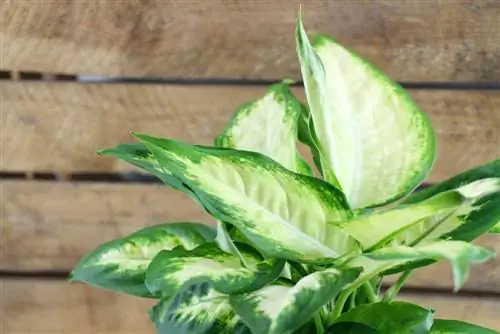
With its magnificent leaves and powerful habit, this houseplant attracts everyone's attention. Unfortunately, pets are also attracted to the tropical plant. The arum plant, however, has shooting cells from which strong toxins shoot out. For dogs and cats, this means painful burns on the eyes with subsequent inflammation. If the animal nibbles on the leaves, it suffers severe nausea, diarrhea, cardiac arrhythmiaand even death
Tip:
When cleaning the leaves of a dieffenbachia, gloves alone are not enough protection. Only adequate glasses prevent the poison from the shooting cells from reaching your eyes.
Dragon tree (Dracaena drago)

An excellent houseplant for beginners, as the dragon tree proves to be pleasantly easy to care for and frugal. The decorative plant should be out of reach of dogs and cats because the saponins contained in the leaves are poisonous.
Poisonous houseplants E to K
Efeutute (Scindapsus)
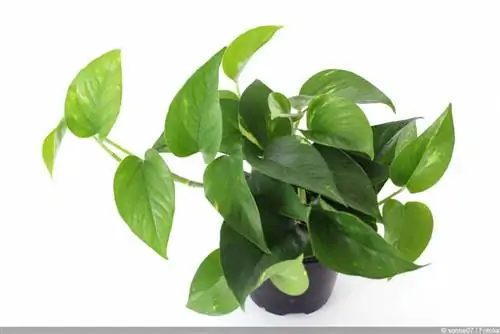
With its long tendrils, the ivy climbs up trellises and other climbing aids to present its shapely, distinctive foliage. Since it is one of the aroid family, cultivation in the household with dogs and cats is problematic. Skin contact results in inflammation. If leaves get into the stomach, nausea and vomiting occur.
Single leaf (Spathiphyllum floribundum)
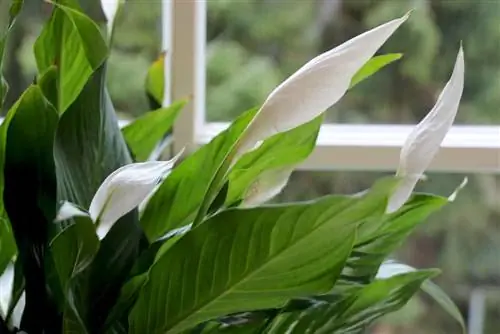
With its large, bright white bract and striking cob, the leaflet is at the top of the popularity scale. What makes you prick up your ears is the fact that this houseplant is classified as a member of the arum family. Pets should not have access to these poisonous plants.
Window Leaf (Monstera)
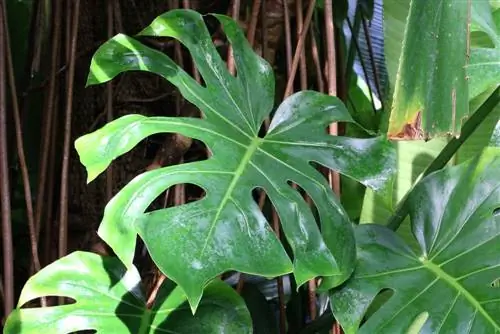
Immigrated from Mexico, the window leaf adorns half-shaded and shady corners of the room with magnificent, partly pinnate leaves. The tropical beauty must not hide the unpleasant characteristic of shooting poison around. If you want to protect your four-legged friends, you should protect them from coming into contact with the window leaf.
Tip:
A no less magnificent, but largely harmless alternative to the poisonous window leaf is the basket marante (Calathea).
Flamingo flower (Anthurium)
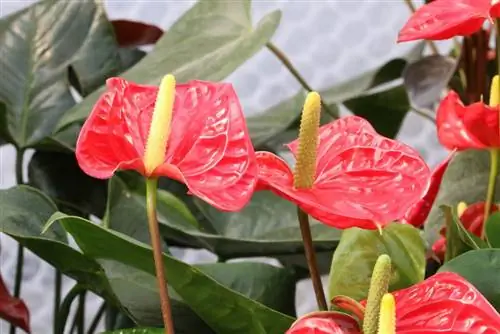
As a classic houseplant, the anthurium is unfortunately laced with the pungent substance aroin, which is toxic to dogs and cats. Even external contact causes swelling and inflammation. If consumed, the result is increased salivation, difficulty swallowing and vomiting.
Gold Trumpet (Allamanda cathartica)
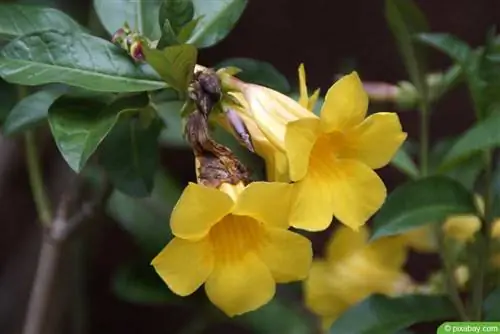
The tropical houseplant with the golden funnel flowers still poses a mystery as to which toxin causes pain and discomfort to the animals. The fact is that symptoms of poisoning can occur through contact or ingestion.
Kaladia (Caladium bicolor)
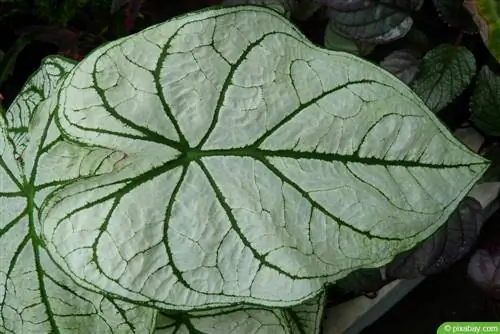
The clearly marked leaves belie the poisonous, colorless sap that flows through the veins of a caladium. If the spicy substance gets into the animal's stomach, intestinal inflammation is the result, accompanied by diarrhea, nausea and vomiting. The houseplant known as Buntwurz should therefore be out of reach of dogs and cats.
Cob thread (Aglaonema commutatum)
They are represented numerously among the most popular rooms, the arum family. Unfortunately, the opulent Kobenfaden also falls under this category. Like all plants in this plant family, this tropical beauty is poisonous in all parts. This applies to all pets, especially dogs and cats.
Croton (Codiaeum variegatum)
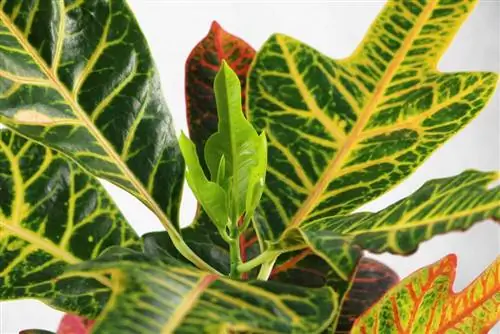
As a houseplant, a croton stands out impressively with colorfully marked leaves. The colorless plant sap would not be noticeable at all if it were not highly toxic. Symptoms of pet poisoning range from irritated mucous membranes in the mouth to vomiting and bloody diarrhea.
Poisonous houseplants P to W
Palm lily (Yucca elephantipes)

The Yucca palm is the typical representative of a houseplant that is harmless to humans and poisonous to dogs or cats. The toxicity is caused by saponins in the plant sap, which cause significant discomfort in animals after consumption.
Magnificent Lily (Gloriosa superba)
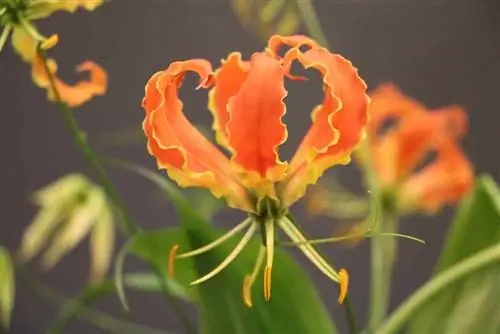
The tropical climbing plant lives up to its name, especially during the summer flowering period. Fatally, the same poison that wreaks havoc on an autumn crocus spreads through the plant pathways. If your four-legged housemate only eats a small amount, the consequences are dramatic. It begins with difficulty swallowing, progresses to stomach and intestinal cramps, followed by severe colic and even circulatory collapse and respiratory paralysis. Cultivating a magnificent lily near pets therefore needs to be carefully considered. Families with children should generally avoid this.
Skewed Leaf (Begonia)
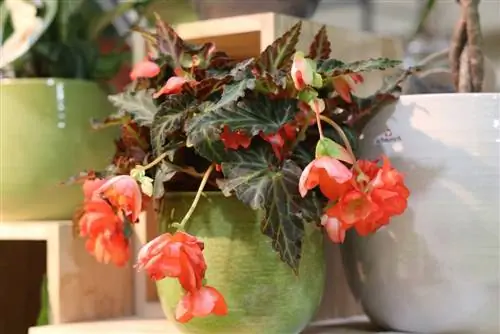
Fortunately, not all begonias are poisonous. If you want to enjoy the colorful flowers in your room, simply avoid Begonia gracilis and Begonia rex, as these varieties contain harmful calcium oxalates and oxalic acid. Since new breeds are constantly coming onto the market, prudent pet owners should ask when purchasing as a precaution.
Poinsettia (Euphorbia pulcherrima)
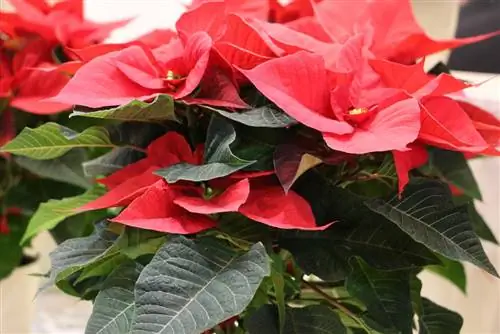
Their blossoms herald the coming of Christmas. As a houseplant, the poinsettia is an indispensable part of the standard equipment on the winter windowsill. While the milky sap from cultivated varieties is harmless to humans, it proves to be treacherous for dogs and cats. If your four-legged companions chew on the leaves, the punishment will follow immediately in the form of symptoms of poisoning in any form or even death.
Desert Rose (Adenium obesum)
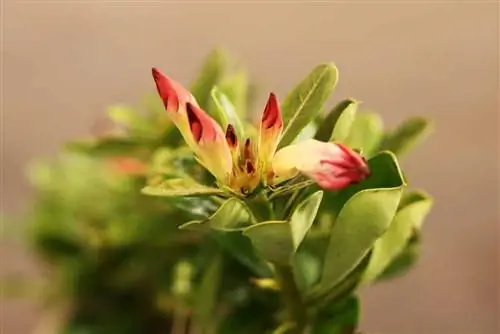
Botanists wisely assigned this houseplant to the dogpoison family. In fact, the desert rose is just as virulent as red foxglove in the garden. Strict safety precautions are therefore recommended in the immediate vicinity of children and pets.
Conclusion
If the gardener's heart beats for decorative ornamental plants as well as for dogs and cats, every house plant is questioned for its toxic content. Unfortunately, many species and varieties are harmless to humans, while they pose a he alth-damaging or even fatal threat to pets. With other ornamental plants, you only become aware of their toxic effects on your own he alth because they are also poisonous to your beloved pet. It is therefore worth taking a look at this list of poisonous houseplants for dogs and cats from several perspectives.




